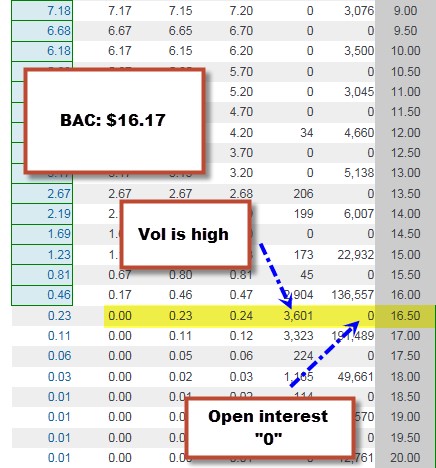Contents:


Let’s assume that a friend invests $1,000 into your business. Immediately, you can add $1,000 to your cash account thanks to the investment. Using credit is different because it means you exceed the finances available to your business. Instead, you essentially borrow money, similar to how you would with a bank loan. A loss account is the opposite of a gain account, reflecting a decrease in value from nonprimary-business events.
Debit and credit are the cornerstones of the double-entry system. The simplest account structure is shaped like the letter T. Debits (abbreviated Dr.) always go on the left side of the T, and credits (abbreviated Cr.) always go on the right. Next we look at how to apply this concept in journal entries. The result of crediting one account while debiting another is the opposite.
What Are Debits and Credits in Accounting?
Transaction Of A BusinessA business transaction is the exchange of goods or services for cash with third parties (such as customers, vendors, etc.). The goods involved have monetary and tangible economic value, which may be recorded and presented in the company’s financial statements. Furthermore, the number of transactions entered as the debits must be equivalent to that of the credits. In Section 2.3 we recorded the consequences of these transactions in a balance sheet for Edgar Edwards Enterprises dated 6/7/20X2. As there were only six transactions, it was probably not too difficult. However, many enterprises have to record hundreds of transactions per day.
Debits and credits will automatically post to the appropriate accounts once a transaction is created — the software can also handle that for some journal entries. In terms of recordkeeping, debits are always recorded on the left side, as a positive number to reflect incoming money. Simply put, balancing a business’s books involves recording how money flows in and out of the business and ensuring the entries “balance” each other out. These bookkeeping entries, which appear on a company’s financial statement, are also referred to as debits and credits. Understanding debits and credits helps you improve accuracy in recording business transactions. The transactions summarized by an account in the trial balance should be the same as those summarized by an account in the general ledger.
Purchase of Office Supplies on a Credit Card
It is accepted accounting practice to indent credit transactions recorded within a journal. Debit cards and credit cards are creative terms used by the banking industry to market and identify each card. From the cardholder’s point of view, a credit card account normally contains a credit balance, a debit card account normally contains a debit balance.
What Is Double-Entry Bookkeeping? And Why Is It Important? – Software Advice
What Is Double-Entry Bookkeeping? And Why Is It Important?.
Posted: Mon, 27 Mar 2023 07:00:00 GMT [source]
Revenue earned by a business adds to Assets, possibly by increasing a bank account. Or it might take the form of a receivable, that is, an amount earned and invoiced to a customer but for which money has not yet been received from the customer. A receivable is still an asset, because it has value to your business.
The foundation of double-financial accounting vs managerial accounting accounting is this procedure. Accounts “roll up” into specific lines on a company’s balance sheet or income statement, which depict a company’s financial health, value, and profitability. They also assist internal and external decision-makers, such as management of the company, lenders, investors, and tax authorities.
Accounting 101: Debits and Credits
Both of these financial statements are governed by the double-entry principle, however. Which balance sheet account provides evidence that Tootsie Roll records sales on an accrual basis rather than a cash basis? Trial Balance are a two- column summary with the accounts used in journal entry being shown, together with the total of… There are several groups of accounts that are included in your financial statements. When you’re keeping your own books, it’s important to understand how to record both debits and credits. Chart of accounts, that includes items like rent, utilities, payroll, and more.

Each of the following accounts is either an Asset , Contra Account , Liability , Shareholders’ Equity , Revenue , Expense or Dividend account. INVESTMENT BANKING RESOURCESLearn the foundation of Investment banking, financial modeling, valuations and more. Here we discuss the top differences between Debit and Credit with infographics and comparative table.
How to Close a General Ledger
Nominal accounts relate to expenses, losses, incomes or gains. The first known recorded use of the terms is Venetian Luca Pacioli’s 1494 work, Summa de Arithmetica, Geometria, Proportioni et Proportionalita . Pacioli devoted one section of his book to documenting and describing the double-entry bookkeeping system in use during the Renaissance by Venetian merchants, traders and bankers.
- This is an editable Powerpoint five stages graphic that deals with topics like Accounts Payable Debit Balance to help convey your message better graphically.
- This process lies at the heart of double-entry accounting.
- Revenue earned by a business adds to Assets, possibly by increasing a bank account.
- Before closing the books, accountants generate a trial balance which lists accounts in numerical order with debit and credit accounts balances.
A debit card is used to make a purchase with one’s own money. A credit card is used to make a purchase by borrowing money. A description of the accounts in the balance sheet and income statement with a description of which will increase and decrease the account.
Shareholder Distribution
Once again, debits to revenue/gain decrease the account while credits increase the account. Putting all the accounts together, we can examine the following. On the bank’s balance sheet, your business checking account isn’t an asset; it’s a liability because it’s money the bank is holding that belongs to someone else.

You can use the following https://1investing.in/ chart of accounts as a basis for your chart of accounts. DebitDebit represents either an increase in a company’s expenses or a decline in its revenue. If you want to learn accounting, debit and credit would be the first concepts you would learn. The business borrows £5,000 on loan from a bank on 4 July 20X2. As you can see, Bob’s equity account is credited and his vehicles account is debited . — Now let’s take the same example as above except let’s assume Bob paid for the truck by taking out a loan.
Debits record incoming money, whereas credits record outgoing money. In accounting, money coming in and out of your small business is recorded as debits and credits. In this journal entry, cash is increased and accounts receivable credited .

You should be able to complete the debit/credit columns of your chart of accounts spreadsheet . Accounting professionals and bookkeepers may understand the concepts of debits and credits. Still, business owners who are used to daily thinking about credit and debit cards may find them difficult to grasp at first. Every transaction in the world of double-entry accounting affects two or more financial accounts, with a debit signifying value coming in and a credit signifying value going out. A company’s books remain balanced thanks to debits and credits.

